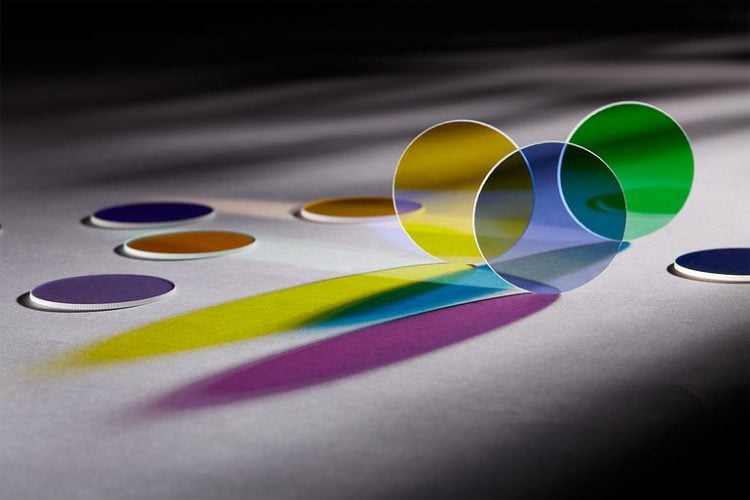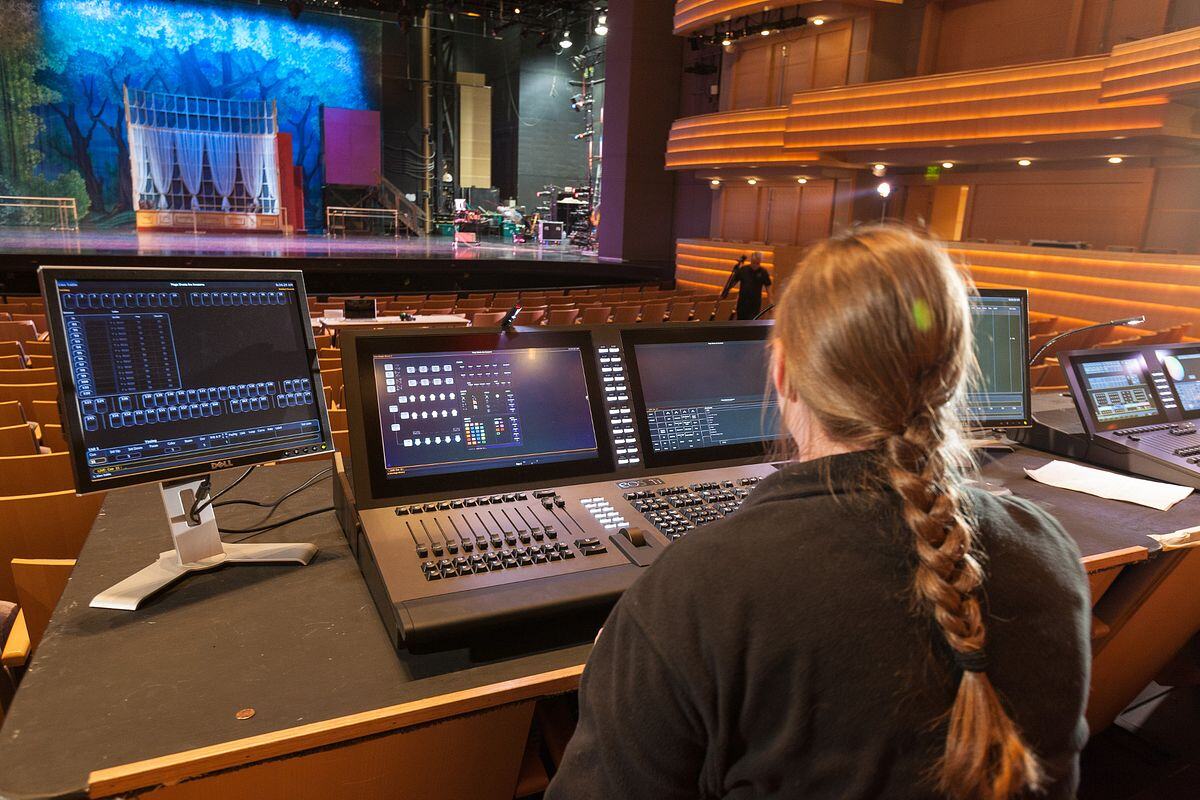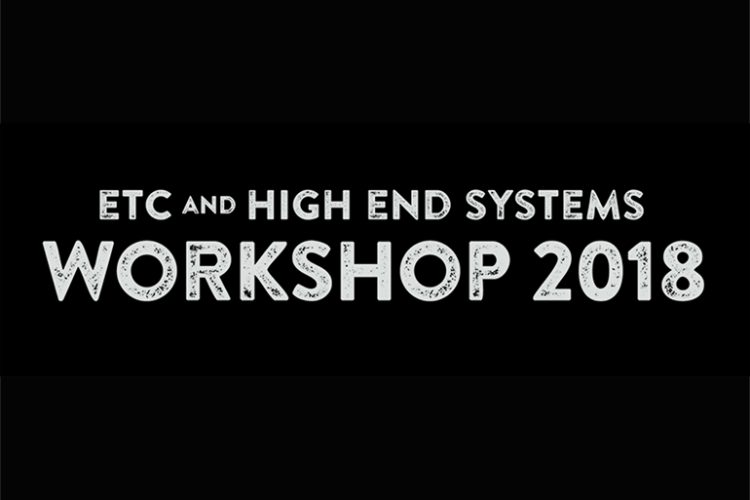High End Systems has been making dichroic color filters for the live event industry for over 30 years. But what is a dichroic filter, how is it different than gel, and what are the benefits of using this stunningly beautiful glass that’s also found in artwork, jewelry, architectural accents, and furniture around the world?
When it comes to the lighting industry, dichroic glass filters and gel filters work in the same manner. White light is made up of all colors of light so when you place a color filter in front of a white light source the filter blocks certain wavelengths and allows others to pass through. The light that is allowed through translates into the color your eyes see. This is known as subtractive color mixing. The filter subtracts certain colors before the light reaches your eyes. Not only do they reflect various wavelengths, they also reflect the unwanted heat buildup that leads to the quick degradation of other types of color filters. Because there is almost no heat degradation, dichroic filters last year after year after year.
Before we had colored LEDs, the only way to make colored light was to place a color filter in front of white light. Unfortunately, the more saturated the color, the more light you lose behind the filter, and a 16,000-lumen fixture could be quickly reduced to a 3000-lumen fixture.
When it comes to mixing the brightest whites, however, subtractive color mixing can be your best friend. Several of our High End Systems LED fixtures still use dichroic glass to achieve the brightest white light possible. These filters reflect the unwanted colors AND the heat, leaving brilliant whites without the burn factor.
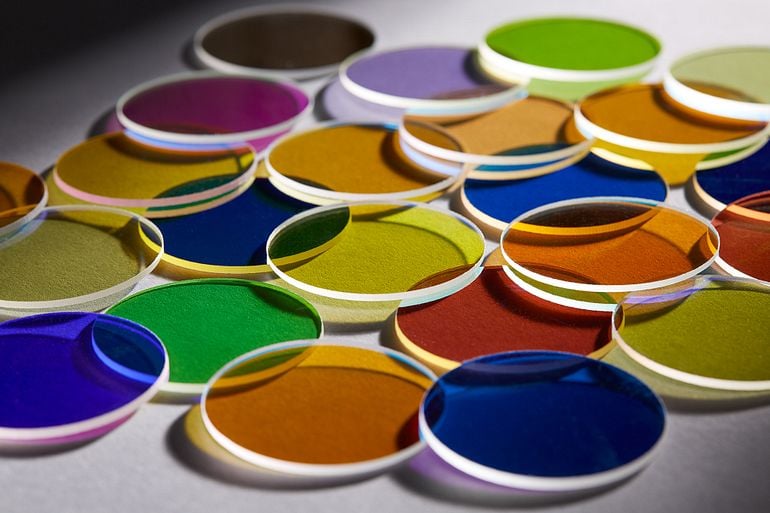
How are dichroic filters made?
Dichroics are made by stacking layers of glass and micro-layers of metals or oxides to create the color-shifting appearance that is so mesmerizing. The optical films used for ETC dichroics are deposited onto borosilicate float glass substrates, a product chosen because of its enhanced optical and physical properties. The photo above represents only a fraction of the standard colors and wide range of custom coatings we are capable of producing at ETC. We also have a library of color correctors, hotmirrors, and UV (Blacklight) filters available and can engineer custom coatings to fit almost any customer requirements.
Prior to coating, all materials are precision cleaned in an automated five-step ultrasonic process. Substrates are transported through each step robotically. This system was custom made to accommodate 30″ substrates and provide an exceptional level of substrate cleanliness. This translates to excellent film adhesion and minimal optical defects.
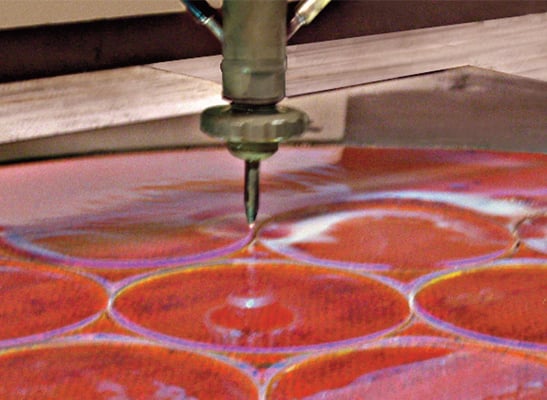
Using state-of-the-art computer-controlled waterjet and scribe/break technology, our Optical Lab is equipped to meet your custom dichroic filter sizing requirements. Whether you require simple geometric shapes or more intricate designs, our sizing department is capable of sizing your filters to tolerances of up to +/-.010″
Where are dichroic filters used?
While entertainment lighting is our biggest demand, we have also received requests for dichroics as art and architectural features. For example, this image of the University of Texas in Austin uses our dichroic filters to light up the UT Tower.
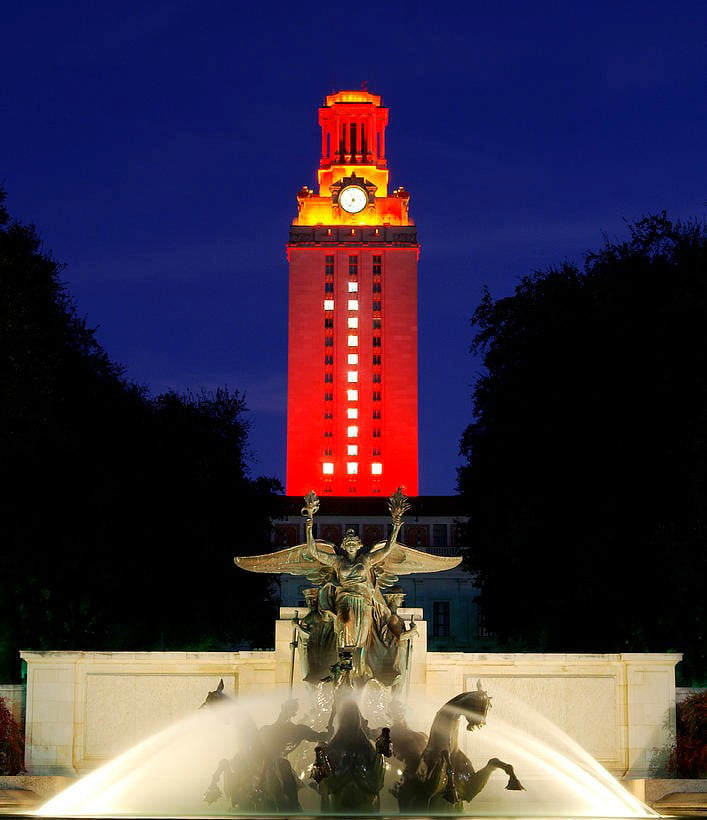
Artist Zhao Suikang has used our dichroics in installations across the nation.
My artwork in the public realm is not meant to decorate the space, but rather is rooted in the existing architectural concept. My artwork is integrated into the organic structure of a particular space and reflects both the cultural/social environment of the region and people. – Zhao Suikang
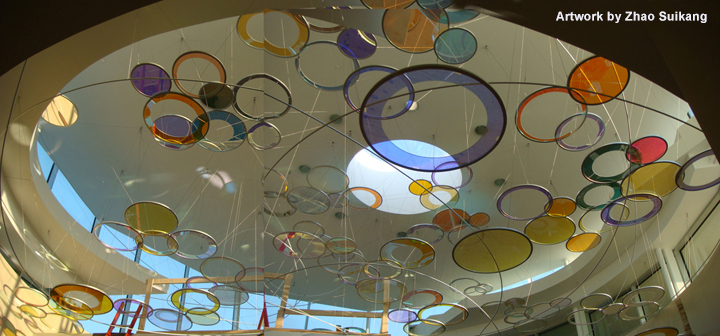
Stephen Knapp was known for his high-profile installations using light and color produced with our dichroics. Head to his website to watch timelapse videos of his installations and hear interviews with the artist.
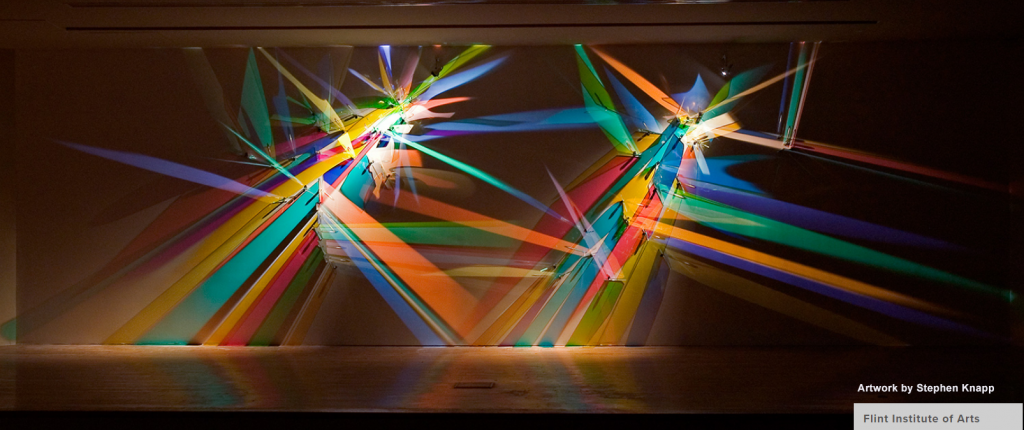
…and many years ago, High End was commissioned to create gradient lithos of a Saudi Prince’s wedding photo.
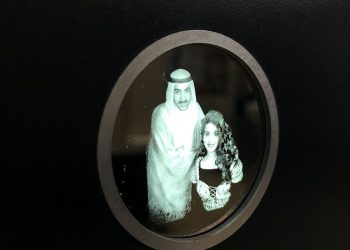
Want to:
- learn more about our dichroic filters? Visit our website!
- read about automated lighting and how far it’s come through technology? Check out A Casual History of Moving Lights
- see how dichroics perform in our TurboRay fixtures? Watch this video!
The technology of how we engineer and manufacture dichroic filters continues to evolve in exciting ways. If you have images to project, light to manipulate, or color to create, give us a call and see what we can do to take your art to the next level.


